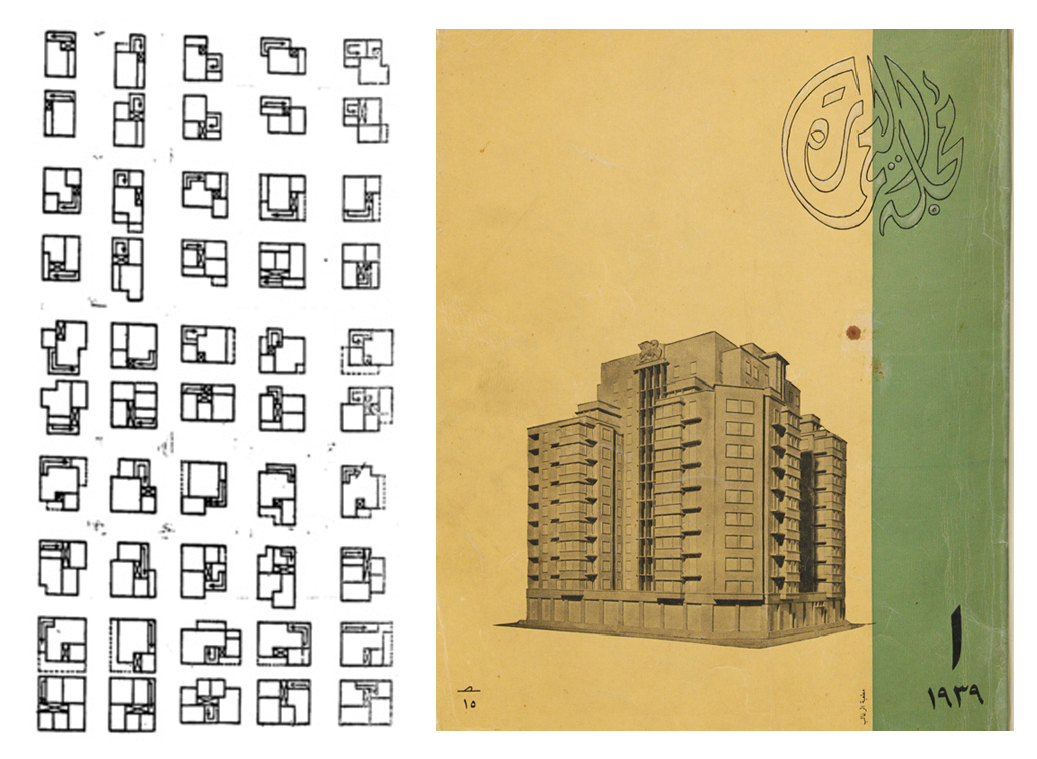PAST TALKS 2022
8 November 2022
Inhabited Utopias
MARIA RÍUS RUIZ
MIT
Respondent: Giacomo Valzania, McGill University
![]()
El Barri Gaudí, Reus, Spain. Photo-collage by Taller de Arquitectura, 1968.
***
Situating the Definition
SHAIKHAH ALSAHLI
UPenn Architecture
Respondents: Dalila Ghodbane, perspective.brussels and
Mohamed Monkez Shaker, Misr International University
![]() Left: Space Planning Study, in Sayyid Karim, ‘Ishtirākiyyat al-villa [The Socialization of the Villa], 29. Right: The cover of the first issue of Majallat al- ‘Imārah [The Architecture Magazine], (Cairo, 1939).
Left: Space Planning Study, in Sayyid Karim, ‘Ishtirākiyyat al-villa [The Socialization of the Villa], 29. Right: The cover of the first issue of Majallat al- ‘Imārah [The Architecture Magazine], (Cairo, 1939).
Inhabited Utopias
‘El Barri Gaudí’
MARIA RÍUS RUIZ
MIT
Respondent: Giacomo Valzania, McGill University

El Barri Gaudí, Reus, Spain. Photo-collage by Taller de Arquitectura, 1968.
Social interaction is critical for mental and physical health. In an increasingly digitally connected world, how could architecture support communal life in our cities? My Ph.D. research entitled ‘‘Inhabited utopias’’ explores El Barri Gaudí, one of the collective housing prototypes that emerged worldwide during the 1960s from the counter-cultural movements that longed for social equity. In opposition to the widespread linear and repetitive housing blocs that built fragmented, scattered, and individualistic cities, the Neighborhood was conceived as a spatial village within the city. Rather than a finished construction, it was thought of as an organic system, a combination in space of private cells organized around a wide range of common spaces. The Neighborhood aimed to build a more inclusive, diverse, and connected city. This dissertation analyses el Barri Gaudí, through three essential moments: utopia, materialization, and inhabitation. My research gathers original and unpublished material from archives and a series of interviews I conducted with the interdisciplinary design team -Taller de Arquitectura- directed by Ricardo Bofill. In addition, extensive fieldwork based on direct observation and data collection is conducted to understand how the Neighborhood is currently inhabited. This methodology allows us to contrast its ideal conception to its final use.
Many of the challenges faced by El Barri Gaudí are still present today, such as immigration, social equity, inclusive design, and the need for affordable housing. After being revisited to address essential issues of our current societies-new relationship realities, climate crisis, post-anthropocene point of view- the Neighborhood has the potential to give us relevant information for the conception of future co-housing designs, typologies and regulations. This research aims to understand what we can learn from this experience to build on a higher sense of community in cities.
Many of the challenges faced by El Barri Gaudí are still present today, such as immigration, social equity, inclusive design, and the need for affordable housing. After being revisited to address essential issues of our current societies-new relationship realities, climate crisis, post-anthropocene point of view- the Neighborhood has the potential to give us relevant information for the conception of future co-housing designs, typologies and regulations. This research aims to understand what we can learn from this experience to build on a higher sense of community in cities.
***
Situating the Definition
of the “Modern Architect” in Arabic Writing:
The Case of Sayyid Karim
SHAIKHAH ALSAHLI
UPenn Architecture
Respondents: Dalila Ghodbane, perspective.brussels and
Mohamed Monkez Shaker, Misr International University
 Left: Space Planning Study, in Sayyid Karim, ‘Ishtirākiyyat al-villa [The Socialization of the Villa], 29. Right: The cover of the first issue of Majallat al- ‘Imārah [The Architecture Magazine], (Cairo, 1939).
Left: Space Planning Study, in Sayyid Karim, ‘Ishtirākiyyat al-villa [The Socialization of the Villa], 29. Right: The cover of the first issue of Majallat al- ‘Imārah [The Architecture Magazine], (Cairo, 1939).In the opening article of the first issue of Majallat al- ‘Imarah, the first architectural magazine in Arabic published in 1939, Sayyid Karim (1911-2005) titles this article “What is Architecture?” Karim described the architecture of Egypt at that period to be suffering a “chaos” (fawḍa). Karim was not the only Arab architect who emphasized a form of disruption. In his article, Karim highlighted the end of the phase in which architecture is understood as art and the beginning of another phase in which architecture is science. In his manifesto, Karim celebrated the era of science and technology. He stated, “modern architecture is art ... a scientific art” (al- ‘Imarah al-ḥadītha fan ... fan ‘ilmī).1 Karim situated architecture between art and science. This split between architecture, art, science, and technology did not emerge until the nineteenth century. A history reader notices that this type of question did not become critical until after the industrial revolution and after science took a leading role in many aspects, including the practice of building. These changes made the architecture discipline a challenge to define itself. In this presentation, I focus on the definition of the practice of building (architecture) between art and science in Arabic writing. I examine Karim’s article and situate it in a historical trajectory of architecture’s definition. I start with writings from the ninth to the seventeenth century to highlight two main points. First, the premodern practice of building was imbedded under mathematics as a practical geometry (handasa ‘amaliya). Second, theory and practice appeared side by side; it was common to discuss the ‘ilm (science/knowledge) of geometry and the ṣinā’a (art/craft) of carpentry, mason, and smith.
1Majallat Al-ʻimārah., 1939, vol 01, Issue 01, 14.
1Majallat Al-ʻimārah., 1939, vol 01, Issue 01, 14.